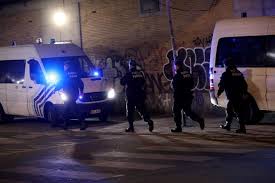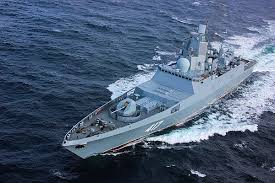MOSCOW (Agencies): The fourth power unit of the Kalinin nuclear power plant (NPP), located near the town of Udomlya in the Tver region, has been shut down due to the triggering of automation, Rosenergo-atom concern reported on its Telegram channel.
“On September 26 at 10:01 am, the fourth power unit of the Kalinin NPP was shut down by the automatic operation. The reasons for the automatic operation are being investigated. There are no violations of the limits and conditions of safe operation. <…> The radiation background in the area of the nuclear power plant and the adjacent territory is at a level corresponding to the normal operation of power units, and does not exceed natural background values, ”the message says.
The trigger could have happened for a variety of reasons. Each complex technical structure, which of course is a nuclear power plant, has scenario conditions under which automation can work. It just exists in order to trigger, if necessary, without human intervention, based on the values of different parameters.
Power control of VVER-1000 reactors (those operated at the Kalinin NPP – Gazeta.Ru) is carried out by the control and protection system (CPS) – by changing the position in the core of clusters of rods with absorbing elements (tubes with boron carbide), and also by changing the concentration of boric acid in the water of the primary circuit.
Earlier on Wednesday, September 22, it was reported that emergency drills were conducted at the station, as well as training for the actions of employees and fire services in a similar situation.
The purpose of the exercise was to check the readiness of NPP workers to control, localize and eliminate a conditional “beyond design basis” accident.
The training scenario assumed a complete de-energization of one of the power units of the Kalinin NPP, followed by the activation of mobile emergency equipment required to supply electricity and water.
The chief engineer of the plant, Alexander Dorofeev, explained that independent sources of water supply and power supply for security systems are installed at all power units of the Kalinin NPP.
“These are diesel generators with a capacity of 2 MW and 0.2 MW, mobile high-pressure pumping units, motor pumps with different performance and head characteristics,” he noted, adding that during the training, the power units of the Kalinin NPP were operating normally, no interventions in their work was not carried out.
In mid-July last year, it was reported that power unit No. 4, which on Sunday, September 26, was shut down by automatic equipment, was undergoing a scheduled overhaul, for which it was stopped for 42 days. During the repair, work was carried out to reload and unload nuclear fuel, control the state of the reactor vessel metal, and repair heat exchange equipment.
Recall that the installed capacity of the Kalinin NPP, located in the north of the Tver region, 350 kilometers from Moscow, is 4,000 MW. The station consists of two stages, each of which includes two power units with a capacity of 1000 megawatts. The first two blocks of the station were launched in 1984 and 1986. The third power unit was put into operation in 2004, and in 2011 power unit No. 4 was launched (stopped today by the station’s automation).
The plant uses reactors of the VVER-1000 type (pressurized water-cooled power reactor), which today are the most reliable and safe in the world, and also have the greatest economic efficiency.
This type of reactor was developed in the USSR, development began in 1954, and 10 years later the first reactor of this type was put into operation at the Novovoronezh NPP.
Kalinin nuclear power plant (NPP) provides power via high-voltage lines to Tver, Moscow, St. Petersburg and other cities.
It is worth noting that the two largest disasters related to nuclear power have occurred at a different type of reactor.
At the nuclear power plant in Chernobyl, there were reactors of the RBMK-1000 type (high-power channel reactor), and at the Fukushima nuclear power plant, BWR (boiling water-moderated reactor).






